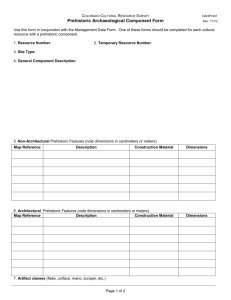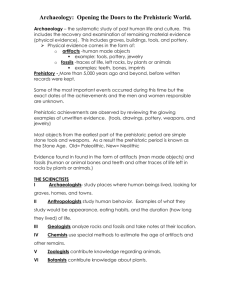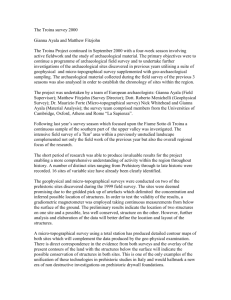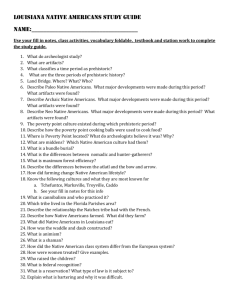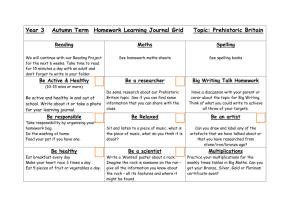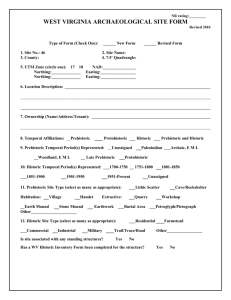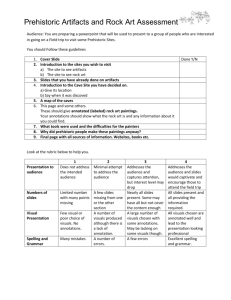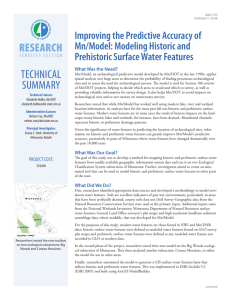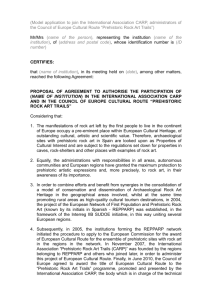Prehistoric Archaeological Component Form
advertisement
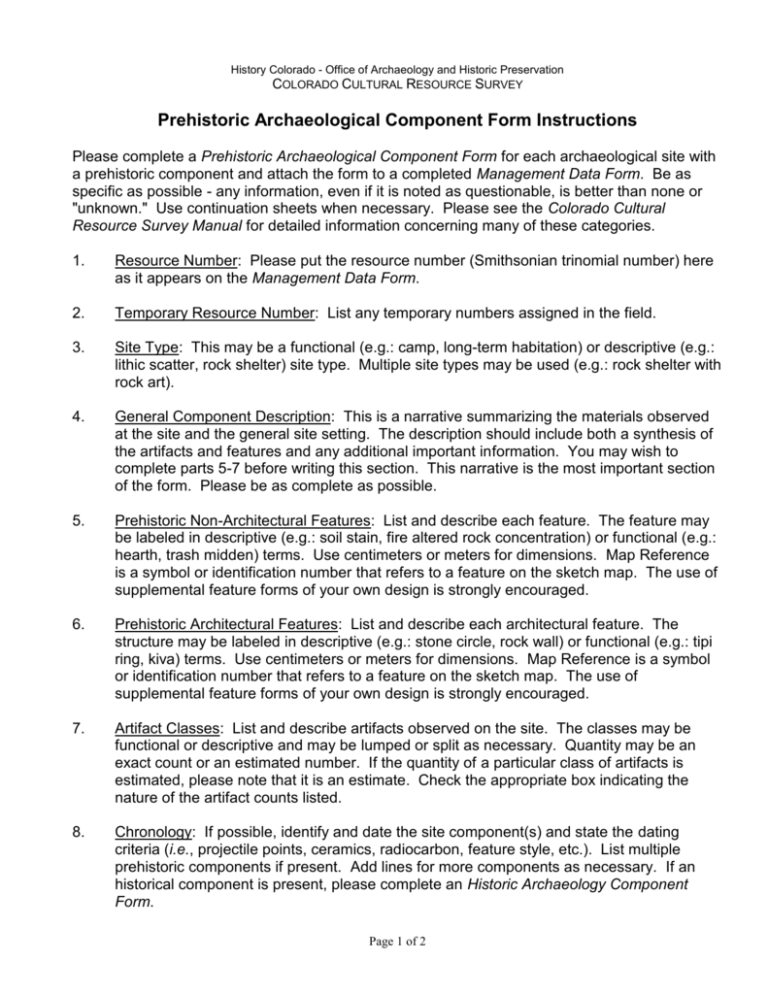
History Colorado - Office of Archaeology and Historic Preservation COLORADO CULTURAL RESOURCE SURVEY Prehistoric Archaeological Component Form Instructions Please complete a Prehistoric Archaeological Component Form for each archaeological site with a prehistoric component and attach the form to a completed Management Data Form. Be as specific as possible - any information, even if it is noted as questionable, is better than none or "unknown." Use continuation sheets when necessary. Please see the Colorado Cultural Resource Survey Manual for detailed information concerning many of these categories. 1. Resource Number: Please put the resource number (Smithsonian trinomial number) here as it appears on the Management Data Form. 2. Temporary Resource Number: List any temporary numbers assigned in the field. 3. Site Type: This may be a functional (e.g.: camp, long-term habitation) or descriptive (e.g.: lithic scatter, rock shelter) site type. Multiple site types may be used (e.g.: rock shelter with rock art). 4. General Component Description: This is a narrative summarizing the materials observed at the site and the general site setting. The description should include both a synthesis of the artifacts and features and any additional important information. You may wish to complete parts 5-7 before writing this section. This narrative is the most important section of the form. Please be as complete as possible. 5. Prehistoric Non-Architectural Features: List and describe each feature. The feature may be labeled in descriptive (e.g.: soil stain, fire altered rock concentration) or functional (e.g.: hearth, trash midden) terms. Use centimeters or meters for dimensions. Map Reference is a symbol or identification number that refers to a feature on the sketch map. The use of supplemental feature forms of your own design is strongly encouraged. 6. Prehistoric Architectural Features: List and describe each architectural feature. The structure may be labeled in descriptive (e.g.: stone circle, rock wall) or functional (e.g.: tipi ring, kiva) terms. Use centimeters or meters for dimensions. Map Reference is a symbol or identification number that refers to a feature on the sketch map. The use of supplemental feature forms of your own design is strongly encouraged. 7. Artifact Classes: List and describe artifacts observed on the site. The classes may be functional or descriptive and may be lumped or split as necessary. Quantity may be an exact count or an estimated number. If the quantity of a particular class of artifacts is estimated, please note that it is an estimate. Check the appropriate box indicating the nature of the artifact counts listed. 8. Chronology: If possible, identify and date the site component(s) and state the dating criteria (i.e., projectile points, ceramics, radiocarbon, feature style, etc.). List multiple prehistoric components if present. Add lines for more components as necessary. If an historical component is present, please complete an Historic Archaeology Component Form. Page 1 of 2 9. Depth of Cultural Deposits: If at all possible, estimate the depth of the cultural deposits on the site. This can be based on deposits viewed in a cutbank, other erosional/man-made features, or any other evidence of buried cultural deposits. Indicate the method for estimating or ascertaining the depth of cultural deposits. 10. Activities Inferred from the Remains: Based on your observations, describe activities suggested by material remains and environmental setting. These should correspond to the site type(s) listed in #3 above, and should be limited to activities for which there is direct evidence. 11. Is the site likely to yield information important in prehistory? Please check yes or no and explain your reasoning. If the answer is yes, then the site is probably eligible to the National Register of Historic Places under criterion D and should be noted as such on the Management Data Form. Provide additional information as appropriate about the data potential of the site. 12. Recorder(s) and Date: Enter the full name of the recorder(s). Do not use initials. Enter the last day that you were in the field. The date should be in a MM/DD/YYYY format Page 2 of 2
